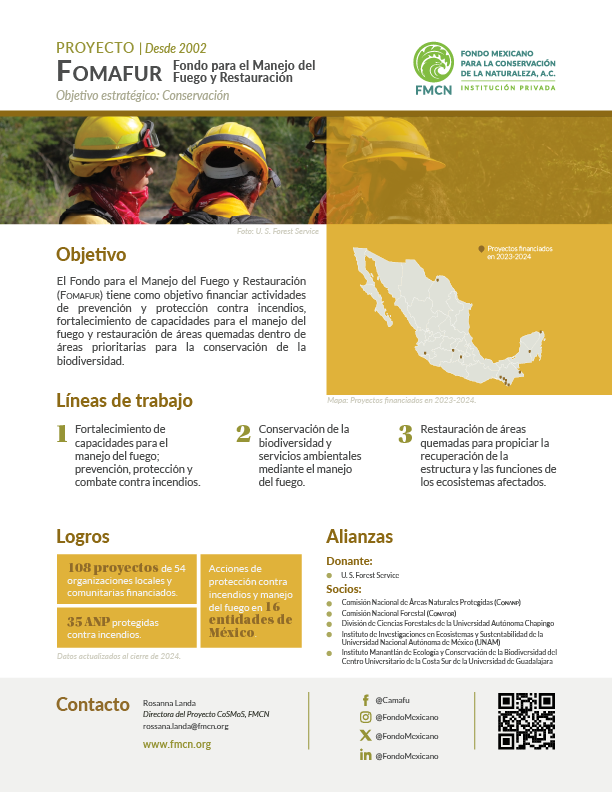Fire and Restoration Management Fund (FOMAFUR)
Capacity building of local organizations in fire management and restoration of affected areas.
The Project
The objective of the Fire and Restoration Management Fund (Fomafur, acronym in Spanish) is to finance and strengthen fire protection activities, integrated fire management, and the restoration of areas affected by fire in top priority regions for biodiversity in Mexico.
Context
- Fire prevention and protection, and capacity building to implement strategies to reduce fire danger and negative impacts on PAs and their surrounding areas.
- Fire management to conserve and restore fire regimes and reduce negative impacts on biodiversity and its environmental services.
- Restoration of burned areas through the recovery of the structure and functions of affected ecosystems.
In 2004, FMCN created Fomafur to give permanence to fire management activities.
Achievements
Fomafur has supported 108 projects from 54 civil and community organizations to deploy fire protection and fire management actions in 35 PAs and their areas of influence in 16 Mexican states.
During the second half of 2024, nine subprojects were funded, implemented by local organizations in priority areas for biodiversity conservation in collaboration with the National Commission of Natural Protected Areas (Conanp, acronym in Spanish) and the National Forestry Commission (Conafor, acronym in Spanish). These subprojects formed 25 fire management brigades, promoting gender-equitable participation, and trained 164 people in wildfire prevention and control. Additionally, restoration and sustainable natural resource use activities were carried out on 942 hectares and 225 linear kilometers. As part of the awareness-raising strategy, 18 environmental education materials were developed, including banners, posters, videos, and radio announcements.
Allies
Partners:
- National Commission of Natural Protected Areas (Conanp, acronym in Sapanish)
- National Forestry Commission (Conafor, acronym in Spanish)
- Division of Forestry Sciences at the Autonomous University of Chapingo
- Institute of Ecosystems and Sustainability Research at the National Autonomous University of Mexico
- Manantlán Institute of Ecology and Biodiversity Conservation at the University of Guadalajara's South Coast University Center
